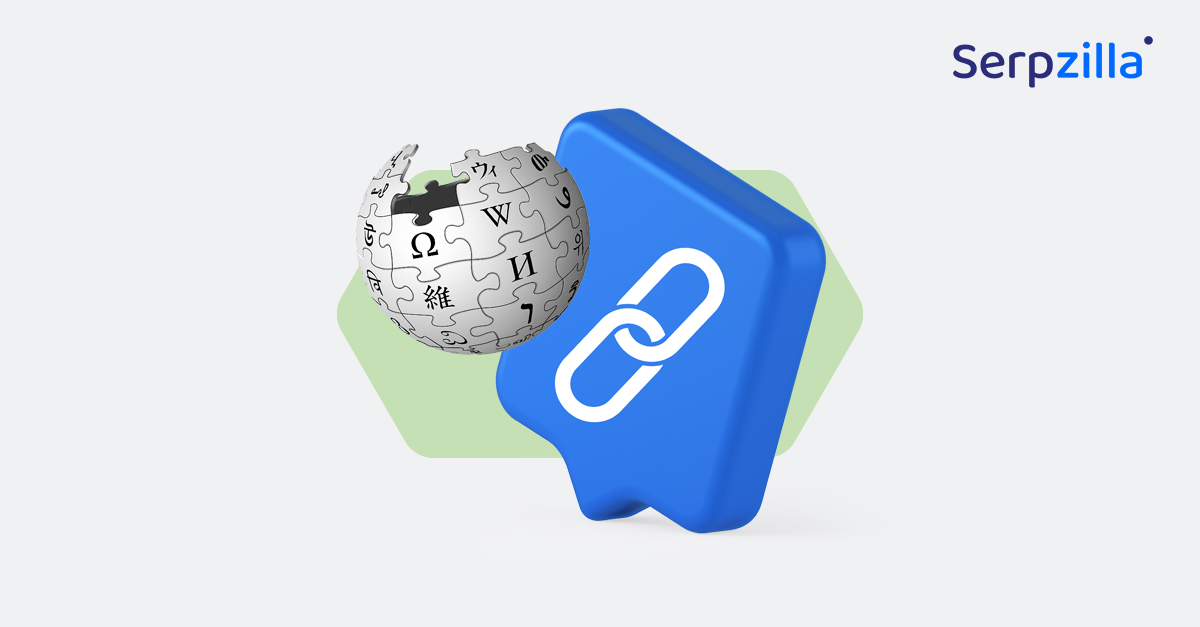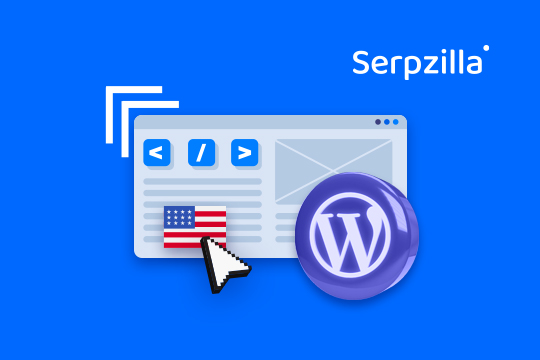Introduction
In my 10 years of working with SEO to help businesses grow and scale their traffic, one of the most important lessons I’ve learned is the value of quality backlinks.
As much as you need backlinks to rank higher on Google, not all links can get you there. Some links can even hurt your website’s performance and penalize you. Trust me, I’ve seen it happen multiple times.
In this article, I’ll walk you through a simple yet effective method for conducting backlink quality analysis. This will help you identify toxic backlinks and ensure your link profile works for you, not against you.
Who am I?
I’m Connor Gillivan, and my team and I run SEO for 30+ clients at TrioSEO. After helping businesses grow for over a decade, I’ve seen firsthand how powerful link-building can be when done right.
I’ve worked on everything from online businesses to large-scale tech operations, and I’ve learned a few tricks along the way that I’m excited to share with you.
Let’s dive in!
What Defines a High-Quality Backlink?
High-quality backlinks are still under the microscope, as Google keeps changing its algorithm to measure a good backlink.
However, some core elements that suffice for a quality backlink: it should be natural, relevant, and come from a reputable source.
It should provide value to your readers and shouldn’t just be there to manipulate Google into thinking it comes from a reputable source. Google measures the credibility of a backlink through concepts like PageRank, so you can forget about fooling the algorithm.
Additionally, the value of your backlink will increase if it comes from a relevant page or domain, something that aligns with your niche. For example, if you have a website about nutrition, a link from “Healthline” would make more sense than a random blog on search engines.
Importance of Backlink Analysis in SEO
You might already know that you need SEO to rank on Google, but there are many aspects to it that you may not understand.
Backlinks are one aspect that makes your SEO efforts worthwhile. Having quality backlinks increases your website’s authority and credibility in the eyes of Google.
Here’s what a great backlink profile can do to your website traffic:
Here’s more about why it matters:
- Analyzing your backlink profile helps you spot links from authoritative, relevant sites that boost your rankings.
- Having low-quality or spammy backlinks can harm your SEO, that’s why you need to conduct regular analysis to disavow harmful links before they trigger Google penalties.
- Analysis also helps you understand your competitor’s strategies and discover new link-building opportunities.
- Given that backlinks influence rankings, monitoring changes in your link profile can help you measure your SEO performance and adjust your strategy based on the outcome.
Simply put, the more high-quality backlinks you gain, the higher your rank on search engines will be. This gives your site a vote of confidence and enhances its visibility, ultimately bringing more traffic.
If you want a more in depth training on SEO backlinks, be sure to check out my SEO course to understand the importance of backlinking in boosting your SEO strategy.
11-Point Checklist for Effective Backlink Quality Analysis
Here is a curated checklist to help you make sure that your backlinks are aiding to your SEO strategy:
- Assess Link Naturalness: As mentioned earlier, you can not manipulate backlinking; they can only be earned. To gain quality backlinks, avoid links from link farms or anything with excessive reciprocal links, as these can lead to penalties.
- Verify the Authority of the Source: Links from authoritative websites carry more weightage. Use tools like Moz’s Domain Authority (DA) or Ahref’s Domain Rating (DR) to check that.
Here’s an example of a high authority website:
- Check for Industry Relevance: A link from a related industry carries much more value than a random, off-topic one. For instance, if you run a travel blog, a backlink from “Lonely Planet” would mean much more than a link from a finance website.
- Evaluate Anchor Text: A good anchor text should be descriptive and relevant, telling Google and the readers what your page is about. Don’t over-optimize them or stuff them with keywords, as it can appear unnatural and may trigger search engine penalties.
- Analyze Link Placement: A link naturally placed in the middle of a well-written article has more weight than one buried in the footer, sidebar, or under a spammy comment section.
- Link with Dofollow Attribute: As you know, search engines follow links and pass authority, so having Dofollow links boosts your SEO efforts. Any link that is no-follow, sponsored, and UGC (user-generated content) has a very limited impact on SEO but may still drive referral traffic.
- Check the Strength of the Linking Page: A link from a page that itself has strong backlinks is like getting a recommendation from someone more influential. Check the page authority or URL ratings to see if the linking page has its own credibility.
- Ensure the Page is Indexed by Google: If a page isn’t indexed, it’s invisible to Google which means your backlink from the page won’t help you much. To check if it’s indexed, search “site:example.com/page-url” on Google. If you don’t find any results, that link isn’t doing you any favors.
- Core Metrics: Just beyond domain authority, consider analyzing traffic volume, engagement rate, and site reputation.
- Review Site History and Trends: Check if the website has seen sudden traffic drops or penalties. Getting a backlink from a penalized site could hurt your SEO more than help it. Check the site’s historical data using tools like Wayback Machine or Ahref’s traffic trends.
Here’s what you want the backlinking website’s metrics to look like:
- Manual Content Review: Even if a site looks good on paper, conducting a manual check won’t hurt. Find answers to questions like “Is the content high-quality and relevant, or is it full of AI-generated fluff with spammy links?” If the site appears low quality or untrustworthy, disavow the backlink.
Key Strategies for Backlink Quality Analysis
Here are some key strategies to analyze the quality of your backlinks:
Evaluate Domain and Hosting Details
Understanding where the backlinks are coming from will give you a good enough idea about their quality.
Check the domain’s age, hosting location, and reputation. A site with an established presence and a stable hosting provider is generally more trustworthy than a newly created website or one that has moved domains frequently.
You can do this with a tool like Ahrefs or Semrush.
Assess Core Metrics
To gauge the quality of the linking domain, you can use tools like Moz Domain Authority (DA). Ahrefs’ Domain Rating (DR) and Majestic’s Trust Flow (TF).
A site with high authority and relevance will provide stronger SEO value.
Check the Linking Page’s Content Quality
Not all the backlinks from a high-DA site are valuable. To put it into perspective, if the linking page contains thin content, AI-generated spam, or excessive outbound links, it diminishes the SEO value.
Conduct a manual review to ensure the page aligns with the quality of the standard you follow.
Determine Follow vs. No-Follow Links
While no-follow links don’t directly pass the authority, they still play a role in a natural link profile by bringing referrals.
Analyzing the ratio of follow vs. no-follow backlinks helps identify whether a site has a balanced and organic backlink strategy.
Detect Toxic or Spam Links
Toxic links can really harm your website and reduce your credibility in the industry. So, how do you detect toxic links?
Unnatural spikes in backlinks, links from unrelated industries, or patterns of excessive exact-match anchors are some indicators of toxic links.
You can identify them by using Google Search Console and third-party tools to disavow harmful links that could have triggered penalties.
Assess Referral Traffic and Engagement
The purpose of quality backlinks is not just to increase your SEO value but also to drive real traffic to your website.
Analyzing the number of referral visits you’re getting from backlinks helps determine which link is contributing the most to brand visibility and conversions rather than just ranking signals.
Compare Competitor Link Profiles
Conducting a backlink gap analysis helps uncover high-value links your competitors have acquired. Understanding their strategies can provide insights into which domains are worth pursuing for your own backlink profile.
We’ll discuss how to conduct competitive analysis in the next section.
Monitor Link Velocity and Growth Patterns
If you find a sudden surge in backlinks, it might indicate a red flag, especially if they have originated from low-quality sites.
To grow at a natural and sustainable rate you need to keep monitoring link growth trends on your backlink profile.
How to Conduct Competitor Backlink Analysis
First, let me tell you why conducting a competitor backlink analysis is important. It helps you understand their backlinking strategies, which unlocks new opportunities. It also helps you find valuable link-building prospects, identify weaknesses in their approach, and refine your own SEO efforts.
Here’s a step-by-step guide on how to do it:
1. Identify Your Competitors
Before the analysis process, determine who your competitors are, especially those with quality backlinks. It is also a great starting point if you don’t have many backlinks yet.
A quick way to find them is to type your target keywords into Google and note the top-ranking sites. You can also use tools like SEMrush to generate a list of competitors based on common keywords.
2. Choose a Backlink Analysis Tool
While you can manually check each website’s backlinks, using a tool makes the process a hundred times easier and more effective.
Here are my favorite choices:
- Ahrefs offers in-depth backlink tracking, including lost links and domain ratings.
- SEMrush has a massive backlink database and easy-to-read reports for your convenience.
- Moz Link Explorer is great for comparing link profiles side-by-side in your analysis process.
- Ubersuggest provides a backlink opportunity report that uncovers competitor link sources you might have missed.
3. Enter the Domain and Get a Quick Overview
Once you’ve picked your tool, enter your competitor’s domain and analyze their backlink profiler. Here’s what it will look like when you pull it up:
Here’s what you need to look for:
- More quality links that’ll prove its authority.
- Sort the websites by authority linked to your competitor to see which are the most valuable.
- The most linked-to content on their site will tell you what type of content attracts backlinks.
- Ensure their backlinks are coming from relevant sites and not spammy sources.
By comparing these metrics with your own site, you can spot gaps in your backlink profile and identify areas for improvement.
4. Analyze the Metrics and Take Action
With the data you’ve collected from the above step, extract insights and put them to use:
- If competitors are getting backlinks from authoritative sites in your niche, consider reaching out to them.
- If a competitor has lost links, you can replace them with your own content.
- Check for low-quality links that could harm your SEO, and ensure you avoid similar sites.
Challenges in Backlink Quality Analysis
Conducting a backlink quality analysis can come with many challenges, but you must do so to avoid penalties and boost SEO. Let’s look at some common challenges:
- Spotting Toxic Links: We all want backlinks, but some links do more harm than good. Spammy backlinks from link farms, private blog networks (PBNs), or irrelevant directories can trigger Google penalties. The problem is that they’re not easy to detect.
- Balancing Authority vs. Relevance: You land a backlink from a site with a Domain Authority (DA) of 90—amazing, right? Not always. If the site has nothing to do with your industry, that link might not help much.
- Dealing with No-Follow Links: Not all links pass SEO value, and some are tagged as no-follow, sponsored, or user-generated content.
- Hidden or Deindexed Backlinks: Not all existing backlinks actually count toward your rankings. Some may be hidden in JavaScript, buried in iframes, or deindexed by Google. If Google can’t see them, they’re not of much value.
- Evaluating Link Placement and Context: A backlink in a website’s footer or in a spammy comment section is nowhere near as valuable as one placed naturally within high-quality content.
- Analyzing Traffic: Imagine getting a backlink from a high-DA website, but the page linking to you gets zero traffic. If no one visits that page, it’s like a billboard in the middle of nowhere—it exists, but no one sees it.
- Detecting Negative SEO: Believe it or not, competitors can sabotage your rankings by pointing toxic backlinks at your site—a tactic called Negative SEO. If Google suspects your site is involved in spammy link-building, your rankings could plummet.
- Keeping Up with Algorithm Updates: Google is constantly changing the rules of SEO. What worked last year might not work today. Updates like Penguin, Medic, and Helpful Content updates all impact how backlinks are evaluated.
- Manual vs. Automated Analysis: SEO tools are powerful but can’t replace human judgment. You might find a high-DA backlink, but unless you manually check the content quality, you won’t know if it’s valuable.
How to Get High-Quality Backlinks
When you’re trying to boost your SEO, getting high-quality backlinks is a must. The process can be difficult, but it doesn’t have to be a headache.
- Create valuable content like in-depth guides, case studies, or unique research to attract backlinks. If you want some help writing quality content, then reach out to my team at TrioSEO. We have achieved prominent results for brands in various industries.
- Guest posting on a reputable site in your industry can earn you both exposure and a valuable backlink.
- Building relationships with influencers in your niche can lead to opportunities where these thought leaders link back to your site.
- Skyscraper technique where you find popular content in your niche, improve it, and promote it to the same people who linked to the original site.
- Reaching out to resource pages, can you get quality and relevant backlinks.
- Find broken links on authoritative sites and offer your content as a replacement.
While these strategies are very effective, they are somewhat time-consuming. You can make the backlinks process a whole lot easier with Serpzilla, as we automate the process of buying and selling high-quality backlinks.
With Serpzilla, you’ll not only save time but also get high-value links from trusted sources.
Frequently Asked Questions (FAQs)
Here are some commonly asked questions you might be interested in:
What Are Tier 1, Tier 2, and Tier 3 Backlinks?
Here’s what tire 1, tire 2, and tier 3 backlink means:
- Tire 1 backlinks are high-quality, authoritative links that directly point to your site from reputable websites.
- Tire 2 backlinks refer to links that point to the pages that are linked to your site (usually from a good but secondary source).
- Tire 3 backlinks are linked to Tire 2 pages, often used more indirectly or as supportive link-building strategies.
How Often Should I Audit My Backlink Profile?
Conducting a backlink audit at least once a quarter is enough to keep you on top of potential issues. But if your site undergoes a significant algorithm update or a ranking drop, consider doing an audit sooner to detect and fix the problem.
How Long Does It Take for a Backlink to Impact Rankings?
There isn’t an exact time to analyze the impact of backlinking, but it usually takes a few weeks to a couple of months to show any noticeable improvement in rankings.
The time depends largely on factors like the authority of the linking page, the relevance of the content, and Google’s crawl frequency.
How Can I Recover From a Google Penalty Due to Bad Backlinks?
If your site receives any penalty due to toxic backlinks, you’ll need to:
- Identify and disavow any bad links by using tools like Google Search Console.
- Request for link removals from any offending or spammy sites.
- Focus on building more high-quality backlinks to regain the trust and authority of Google.
Remember that recovery takes time, so you must be consistent with your efforts.
Conclusion
Quality backlinks are the heroes that help boost your site’s authority and visibility. They help you create analytics charts that look like this:
Regular analysis is required to ensure that your link profile is good to enhance your rankings.
Regularly auditing your backlinks, spotting toxic links, and focusing on authoritative, relevant sources can protect your site from penalties and boost your rankings.
Remember, effective backlink analysis is all about trust, relevance, and long-term growth.
If you want to strengthen your site’s SEO, reach out to us at TrioSEO for a free 30-minute SEO consultation.









